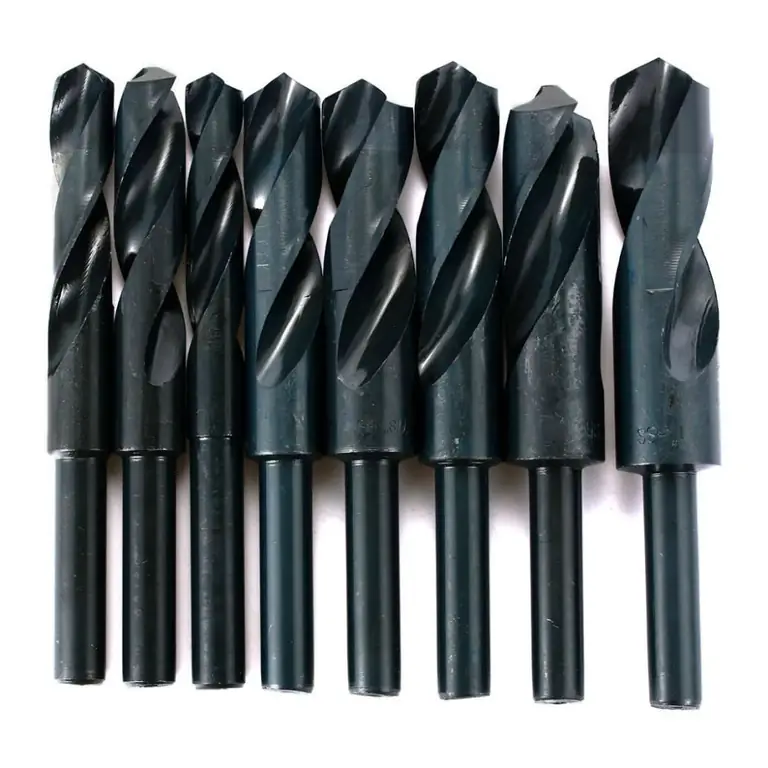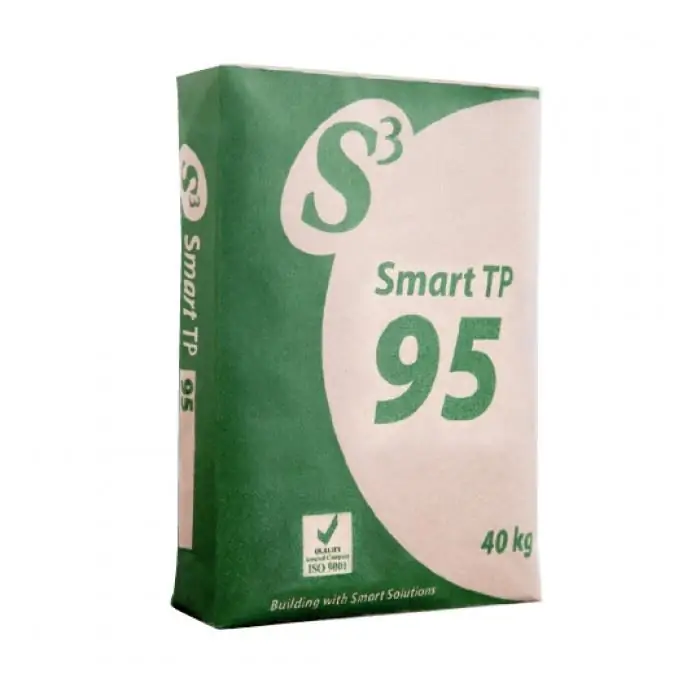2026 Author: Howard Calhoun | [email protected]. Last modified: 2025-01-24 13:10:26
Adhesive itself is a substance or a mixture of substances that can be either organic or inorganic. They also differ in the form in which they are stored. It can be a solid form in the form of granules, liquid in the form of a solution or emulsion, and can also be in powder form, etc. Among all the others, the latex adhesive stands out quite strongly.
Description of the substance
Before proceeding to the description of a specific composition, it should be said that any adhesive substance has such a feature as adhesion. In other words, this is the quality of the stickiness of the substance on the material. This parameter depends on the temperature of both the adhesive and the surface with which it comes into contact. Pressure, viscosity and wettability also play an important role.
Latex glue is a mixture of an aqueous solution of natural rubber with the addition of ammonia. Some of the solutions may additionally contain substances such as resins of synthetic origin, alcohols, esters, as well as some other additives of inorganic origin. This compositional diversityhas led to one type of latex adhesive being good for working with polymer clay or plastic, for example, and another for working with wood.

Varieties of glue
Today, there are two types of glue with a latex base. The first group includes natural latex, and the second - synthetic.
The general structure of latex adhesive, which is based on a natural substance, is as follows: 30-40% rubber, 1-2% protein, 1-3% resins and other additives.
The main application of this composition is the wet duplication of materials. In other words, after applying the adhesive to one of the surfaces to be bonded, it must immediately be brought into contact with the second surface. In order to remove the liquid contained in the composition, it is necessary that at least one of the substrates has a porous structure.
It can also be added that latex glue with natural additives can be used to create a pressure sensitive compound. In this case, the process looks like this. The composition is applied to one of the surfaces, it dries, after which both surfaces must be connected together under pressure.

Characteristics of composition with natural latex
It is worth noting that by using a natural latex adhesive additive, it is possible to obtain a film that has good cohesive strength, but at the same time, it will have poor adhesive performance. In order to improve adhesioncomponent of the solution, adhesive substances are usually added to it, for example, phenol-formaldehyde resins.
In order to get an adhesive base that is sensitive to pressure, you need to mix natural latex and synthetic. However, here it must be taken into account that the viscosity of the composition will be much higher than individually, and therefore a stabilizer is needed. For this type of latex adhesive, the stabilizer can be, for example, casein, potassium or ammonium oleates.
In addition, if you mix natural latex and chloroprene rubber or polystyrene latex, you can get an adhesive tape. The best option for the mixture will be the ratio of natural to synthetic from 95:5 to 50:50.

Other types of glue
Today, latex-based adhesives are mixed with a huge number of other substances. For example, if you add carboxylic rubber to natural latex, you get the same adhesive that is pressure sensitive, but you do not need to use stabilizers, its structure is quite sticky.
Carboxylic acid rubber, such as styrene-butadiene rubber, is great for creating a compound with maximum adhesion. To obtain this composition, it is usually necessary to use fumaric or acrylic acids. The second is the best, and therefore latex-acrylic glue is quite common.

Influence of rubber
It is worth paying attention to other parameters that the composition hasrubber based. For example, the shelf life can range from 3 to 12 months, depending on the nature of the rubber. There is such a characteristic as curing. Glue on this basis can harden both at room temperature and at elevated temperatures. If the temperature is room temperature, then the time until complete hardening is 24 hours. In general, it is worth noting that the range of operating temperatures varies greatly depending on the nature of the rubber. For example, natural can be operated within the range from -50 to +100 degrees Celsius, chloroprene from -50 to +70, PVA within the range from -5 to + 100.
Naturally, this solution also has a certain tensile strength. This parameter depends on which latex is used in the composition, as well as on which vulcanizing system is used. An example of bonding rubber using such a composition can be given. In this case, the strength of the bond will be higher than the original strength of the rubber itself.

Where glue should not be used
As you can already understand, this glue has a huge range of applications. It can adhere to almost any surface. You can even glue wallpaper on latex paint. However, there are still materials for which this composition is not suitable at all, no matter how it is supplemented. Metal became such a surface.
Most water-based compounds are not suitable for metal surfaces. The main reason is that chlorine is released from such compositions with polymers, and it negatively affects the metal, causing itcorrosion. In addition, bond strength with adhesive will never be satisfactory for metal structures.

Application of glue
The scope of this solution is very large. For example, it is suitable for gluing things such as linoleum, carpet or polymer tiles. But here it is worth adding that the mixture used for gluing is not waterproof. This means that any walkways or floor coverings that are laid with such an adhesive cannot be washed. Even a small amount of moisture that penetrates under the surface can easily destroy the entire structure of the adhesive, causing the coating to peel off.
Latex mastic, for example, can be tiled. Before use, the solution must be mixed well, and then applied to the desired surface with a notched trowel. However, before applying the composition to the walls, it is necessary to make sure that they are sufficiently even, otherwise a poor-quality setting is possible. It is also important to know that the final setting and hardening of such a solution occurs only on the fifth day after its application.
Many are also interested in the question of whether it is possible to glue wallpaper on latex paint. It is possible, since this solution is considered almost universal. The main thing is to choose the right substance according to its composition.
Recommended:
CVG steel: composition, application and characteristics

Studying metallurgy and all its subtleties, you involuntarily begin to experience an irresistible desire to get as much useful information as possible and spend as little time and effort as possible on it. In such a case, this article exists. It contains all the most important information related to CVG steel: deciphering the marking, studying the composition, the use of this alloy, as well as a brief excursion into substitute steels and foreign analogues. Everything you need in one place for everyone's convenience
Heat-resistant glue: composition, purpose and instructions for use

Heat resistant adhesive can be used to join parts of a wide variety of materials. With the use of such compositions, furnaces are laid and tiled, metal, ceramic, glass elements are fastened together
Rip-stop fabric: what is it, composition, characteristics, weaving threads and application

Rip-stop fabric - what is it? This is a high-strength material that has a combined weaving structure with reinforced yarn. It has many modifications. Rip-stop fabric is used for sewing all kinds of uniforms and things for recreation and sports, expeditions and hiking, fishing and hunting, overalls. Consider what composition it has, what properties it has
Polymer cement mortar: composition, technical characteristics, compliance with GOST requirements, purpose and application

Polymer cement mortar is one of the modifications of conventional sand-cement mortar. Polymers can also be added to mixtures that are used when laying plaster and other facing materials. The addition of this substance to the composition helps to improve its characteristics
Hadfield steel characteristics: composition, application

The metallurgical industry is one of the most important components of the GDP of every country, and it also produces unique and useful materials. Mankind could not do without the products produced by metallurgical plants. Steel is one of them. There are different types of this material, which are used in many industries. A steel that has high ductility and wear rate, also known as Hadfield steel, is a unique alloy

